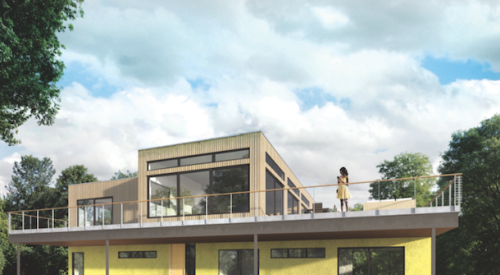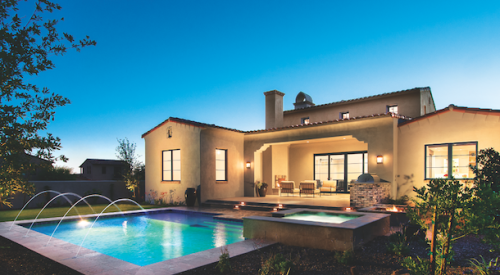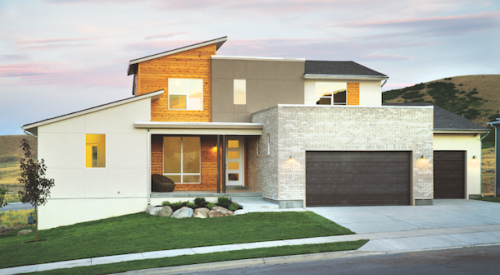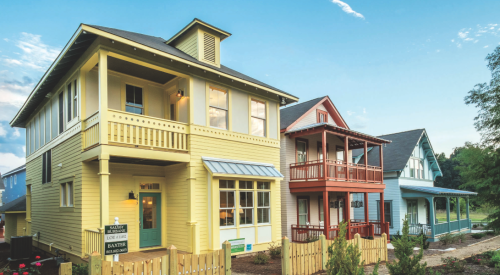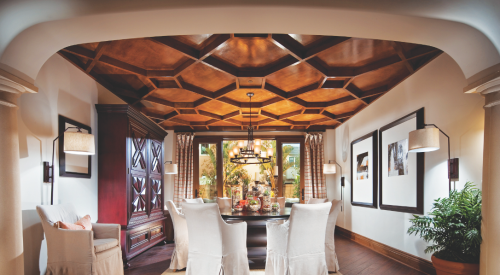Seasoned experts are most often expected to push the home building industry forward, but the U.S. Department of Energy’s (DOE) Solar Decathlon shows that students can be some of the industry’s greatest innovators. For this year’s event, held at Orange County Great Park in Irvine, Calif., 19 collegiate teams met the challenge to create cost-effective, energy-efficient, and attractive homes. After tallying up the scores from 10 different parts of the competition, Team Austria, consisting mostly of students from Vienna University of Technology, finished first in the closest Solar Decathlon ever. The University of Nevada Las Vegas (UNLV) came in second, while the Czech Republic (Czech Technical University) took third. Out of a possible 1,000 points, less than seven points separated the top three teams.
“We were hoping to deliver very well in the competition, but to place first was something that we really, in the back of our heads, weren’t honestly expecting,” says Philipp Klebert, a mechanical engineering student from Team Austria. “You’re in it to win it and that’s your goal and what you set out to do, but to be able to win is a different thing.”
This year’s event was the sixth U.S. Solar Decathlon and the first one held outside of Washington, D.C. Since the first competition in 2002, Solar Decathlon events have also been held in Europe and China, featuring international teams in all three locations.
Recipe for success
 Philipp Klebert celebrates with the rest of Team Austria after learning they were the overall winners of the 2013 Solar Decathlon.
Philipp Klebert celebrates with the rest of Team Austria after learning they were the overall winners of the 2013 Solar Decathlon.
Team Austria’s house, Living Inspired by Sustainable Innovation (LISI), blended the competition’s goals of “affordability, consumer appeal, and design excellence with optimal energy production and maximum efficiency.” A net-zero house, LISI’s design consisted of three major components: a service core, a living area, and adjacent patios.
“The core of our house was the bedroom and bathroom, designed to be one unit that can be picked up as it is and put in a container and shipped anywhere you want,” Klebert said. “Then we could build up the rest of the house behind it.” This central core, which included all of the mechanical systems for the house, was one of the ways Team Austria addressed shipping constraints with its concept. Shipping the house more than 10,000 miles to the California event took six weeks, so working within a tight timeframe was one of the most challenging parts of the competition, according to Klebert.
The house, however, was not the only victory for Team Austria. The team also won first place in the juried Communications Contest, which evaluated websites, public tours, signage, and presentations about the entries.
“How we managed to come out on top was not just one single thing but the whole concept because we tried to look at it holistically and cover all our bases,” Klebert says. “We ranged from architecture students to engineering to interior design and construction to media and communication.”
Communicating with DOE organizers was a larger challenge for Team Austria than for most of the other teams. As one of only two European participants, team members had to write out all of the plans and drawings so the organizers could work with them, but then they also had to translate them into English and redo the calculations using U.S. units of measurement.
“In the two years leading up to the competition in California, hundreds of emails went back and forth about the smallest details,” Klebert says. “If it was just one word within the rules that we weren’t sure exactly what it meant, [the organizers] were great and quick about helping us out.”
On-site execution
 Hundreds of thousands of people visited the Solar Village in October to tour the houses and learn about energy-efficient design and construction.
Hundreds of thousands of people visited the Solar Village in October to tour the houses and learn about energy-efficient design and construction.
After two years of planning, all the teams were faced with additional challenges upon arriving on site. Stanford University’s Start.Home, one of the early frontrunners that eventually placed fifth, had one of the smallest construction crews. The competition coincided with Stanford’s first week of classes, so although it was one of the closest teams, only about 10 students made it down to the site (compared with Team Austria, with approximately 50 students). “It really kind of left us with a skeleton crew, so having more people would have been great,” says Rob Best, construction lead for the Stanford University team. “We could have worked shifts instead of working 19-hour days with the same crew of people, but we were able to get the house done on time.”
The work, however, continued long after the houses were built. In addition to hosting eight days of public tours and performing task completion contests such as cooking and doing laundry, teams had to make sure their houses continued to perform in all kinds of weather, including Santa Ana winds and a rainstorm.
Stanford tied for first place in the Affordability Contest with Norwich University and Kentucky/Indiana, since all three houses were estimated to have cost under $250,000. “We all have these grand ideas,” Best says. “There are so many new technologies, but it was really just this back-and-forth about how we meet this target while ultimately maintaining and advancing the design both on the engineering and the architecture side.”
Learning legacy
 Rob Best from Stanford University meets with Richard Anderson, Affordability Contest juror. Stanford’s entry tied for first in that contest, with a cost of $234,092.
Rob Best from Stanford University meets with Richard Anderson, Affordability Contest juror. Stanford’s entry tied for first in that contest, with a cost of $234,092.
According to the DOE, nearly 17,000 college students have participated in the Solar Decathlon since the program began. The students come from many different disciplines and get true hands-on experience with a large project. “It’s honestly one of the most fulfilling things—win, lose, or draw,” Best says. “No matter what we learned in the classroom, it teaches every single student to be a better designer and to be a better engineer by actually having to put the house together themselves.”
The houses, however, do not just provide learning experiences for the students on the teams. They have a life after the competition, serving as teaching tools for future students and for the public.
UNLV, first place winner in the Market Appeal Contest, will rebuild its DesertSol house, complete with solar electricity and evaporative cooling and irrigation, at the Las Vegas Springs Preserve. The house is expected to draw more than 280,000 visitors per year to learn about sustainable living.
Stanford will add a second bedroom to its Start.Home, so it can serve as a residence for a ranger and his family at the university’s Jasper Ridge Biological Preserve. “The house is such a fabulous learning tool in and of itself that we want it to be accessible and somewhere where students can visit it,” Best says. “The materials we used and the way we designed the house also match the other laboratory buildings on the site.”
As this year’s entries move on to their new locations, some of the teams are already thinking about submitting entries for the next U.S. Solar Decathlon, which will take place in 2015 (pending Congressional funding), or the Solar Decathlons in Europe or China.
“I would be really excited if we participate again,” Klebert says. “I know a lot of people who would love to be a part of the team and be able to do this. The interest is definitely there.”




